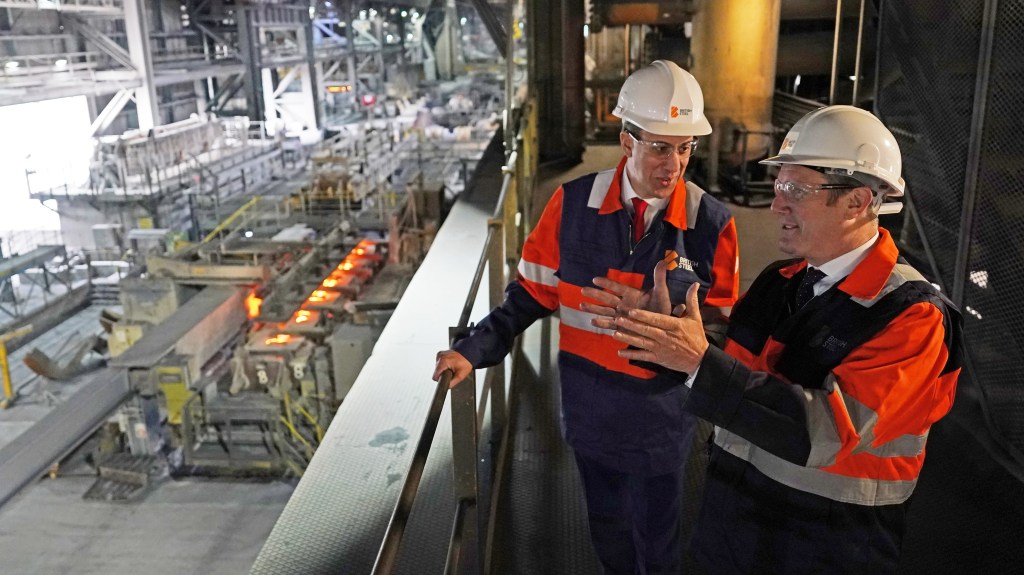Long-term Infrastructure Planning Benefits Economy Despite Political Short-sightedness
Frequent travelers from England into Wales on the M4 will appreciate the impressive piece of infrastructure known as the Prince of Wales Bridge, which exemplifies British design and civil engineering prowess.
This bridge is a prime example of effective infrastructure development. The original Severn Bridge, proposed shortly after World War II, received approval in the early 1960s and was inaugurated in 1966. It significantly reduced travel times and stimulated the economies on both sides of the Severn, particularly in South Wales.
A key insight from this project was the foresight that the bridge would soon face capacity challenges, necessitating a second crossing. Planning commenced in the early 1990s, leading to the second bridge’s opening in 1996.
This second crossing was financed and constructed by a consortium that also managed the first bridge’s operational debt, benefiting from toll revenues for a three-decade period until 2018. The renaming of the second bridge to the Prince of Wales Bridge, however, sparked some debate.
Economies on both banks of the Severn will reap the rewards of this strategic infrastructure investment for years to come. However, inefficiencies in infrastructure planning, such as the failure to reroute the M4 through Newport and Cardiff, have dampened some of these benefits.
The crucial takeaway is that infrastructure commitments made decades ago continue to yield economic advantages, much like the investments made by Victorian-era leaders.
This sentiment was echoed in a recent discussion paper issued by the Office for Budget Responsibility (OBR), an economic and fiscal watchdog for the government. Entitled Public Investment and Potential Output, the paper articulates a clear message despite its technical nature.
According to the OBR, “In our initial … analysis, we find that a sustained 1 per cent of gross domestic product (GDP) increase in public investment could plausibly increase the level of potential output by just under ½ a percent after five years and around 2½ per cent in the long run (50 years).” The economic impact of infrastructure spending may take time to emerge, but when it does, the results can be substantial.
Why the lag? The planning process for projects can be lengthy, a concern voiced by the Labour party, and benefits do not materialize during construction, even though these projects enhance employment and economic activity.
This analysis reveals the inadequacy of the current five-year timeframe for public finance and fiscal guidelines, which fails to encapsulate the long-term benefits of increased infrastructure funding. Whether this short-sightedness accounts for the UK’s public investment challenges or reflects budget overruns and delays compared to international peers is debatable.
Additionally, political agendas often prioritize policies that deliver immediate outcomes rather than those with delayed, substantial payoffs.
The history of public investment in the UK is inconsistent. Governments often waver on whether to prioritize public investment, particularly during tough economic times, as cutting investments tends to draw less backlash than increasing taxes or reducing other expenditures.
Public sector net investment peaked at 8 per cent of GDP in the 1960s, a time characterized by numerous nationalized industries and extensive housing initiatives. However, this figure sharply declined over the following three decades, sometimes falling below 0.5 percent in the 1990s.
Although net investment in the public sector rebounded to 3 per cent of GDP by 2008, it could not withstand the austerity measures introduced by David Cameron and George Osborne in the 2010s, eventually averaging under 2 per cent of GDP.
In 2020, when Rishi Sunak took on the chancellorship, the government planned to commit over £600 billion towards future development, setting a target to elevate public investment rates to their highest since 1955. Nevertheless, the OBR noted that this goal was derailed by the disruptions caused by the pandemic and energy crises, leading to another period of planned reductions.
The OBR’s latest projections indicate a decline in public sector net investment from 2.5 per cent of GDP in 2023-24 to 1.75 per cent in 2028-29. A particularly controversial moment for the ruling party’s infrastructure strategy occurred when Sunak announced the cancellation of the northern leg of HS2 at the Tory conference in Manchester last year, prioritizing pothole repairs instead.
Looking ahead, will Labour take a different approach, or will we see continuity in a government facing financial constraints? Even before the upcoming election, Chancellor Rachel Reeves had to significantly downscale the party’s promised £28 billion annual green investment initiative.
Symbolizing potential change, hopes rest on the new National Wealth Fund, which has an initial allocation of £7.3 billion through the UK Infrastructure Bank. The goal of this fund is to attract private investment, including long-term financing from pension and insurance sectors.
Mark Carney, former governor of the Bank of England and a member of the wealth fund taskforce, commented: “The new government has rightly identified infrastructure investment as a core enabler of building high-value, low-carbon, competitive industries. The smart use of public investment via the National Wealth Fund can kickstart economic growth.”
The pressing question remains whether the fund will operate at a scale sufficient to address past challenges, amidst the reality that politicians often prioritize immediate demands over long-term infrastructure needs.



Post Comment